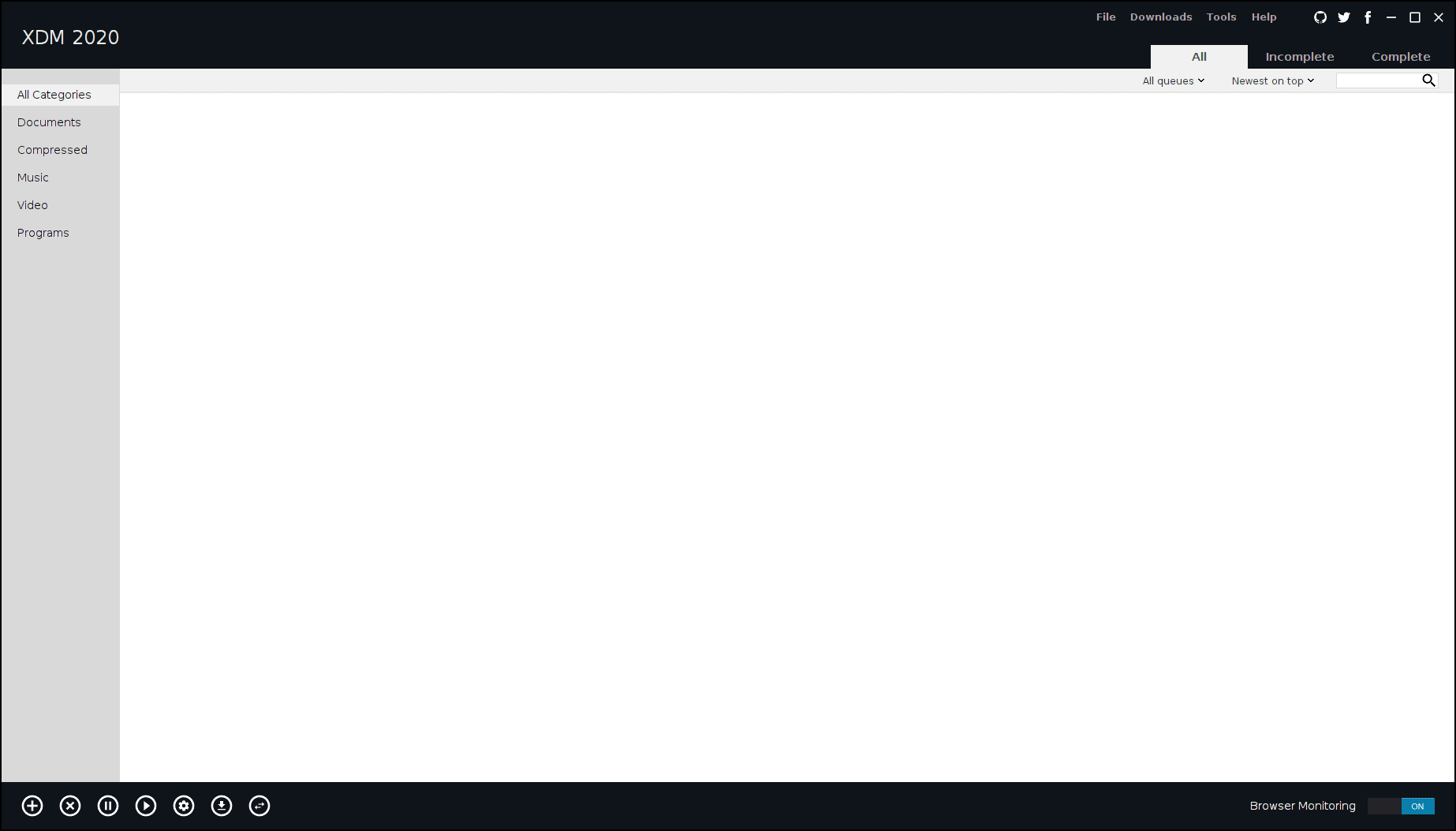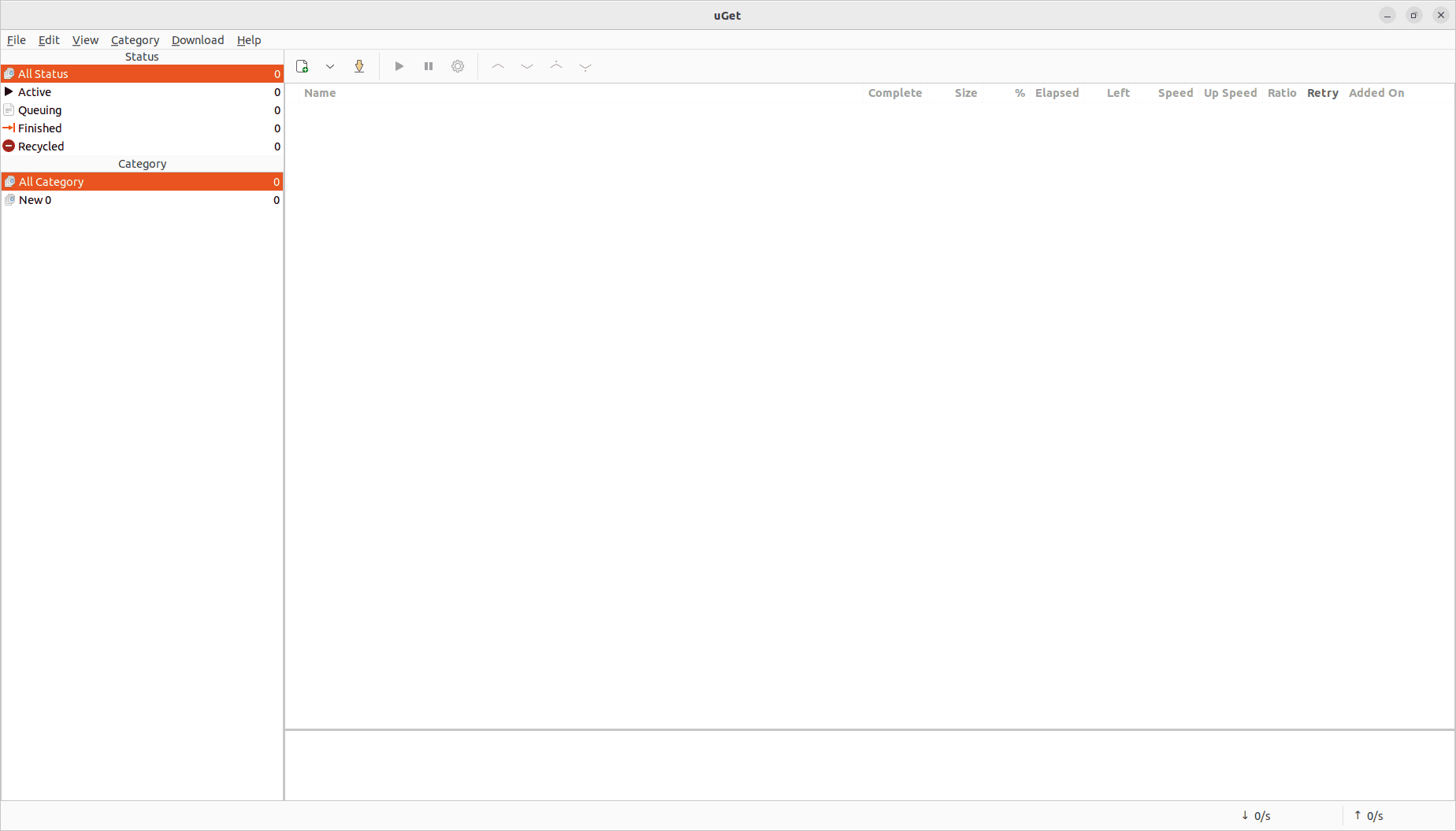1. Overview
One of the challenges that we may face as Linux administrators is downloading files from the Internet or other network locations in a convenient and reliable way.
In general, downloading files, especially large ones, can be a frustrating and time-consuming process for several reasons:
- Internet connections can be slow
- some browsers don’t support pause and resume functions
- headless installations lack convenient browsers
- local machine or remote server can become unresponsive due to instability
This is where download managers come in handy.
In this tutorial, we’ll explore what a download manager is and some of the download managers available for Linux.
2. What Is a Download Manager?
A download manager is a software application that can manage the process of downloading files from the Internet and other network locations.
Further, a download manager can perform various functions:
- accelerate the download speed by using multiple connections, splitting files into smaller chunks, or using a proxy server
- schedule the download to start or stop at a specific time or date, or when certain conditions are met such as low network traffic or idle system
- handle errors and interruptions better than a web browser and recover from them without corrupting or losing the file
- manage the bandwidth usage and allocation for each download or queue
- integrate with the web browser to capture the download links automatically or manually
- provide a user interface to monitor and control the download progress, status, and settings
In addition, download managers are especially relevant for Linux users who may need to download software packages, updates, ISO files, or other files from various sources.
3. Popular Download Managers
There are many download managers available for Linux, each with its own features and advantages. In this section, we’ll explore some popular ones.
3.1. Xtreme Download Manager (XDM)
XDM is a free and open-source download manager that claims it can increase the download speed up to 500%. It supports HTTP, HTTPS, FTP, and other protocols, and can download videos from YouTube, Facebook, and other sites.
It also has some additional features:
- multi-segment downloading: splits the file into several parts and downloads them simultaneously
- smart scheduler: schedule downloads for a specific time or period
- batch downloading: download multiple files or links with one click
- resume capability: resume broken or paused downloads from where they left off
- browser integration: capture and download any file or video from the web browser
To install XDM on Linux, we can download the installer from the official website and run it.
Further, XDM has a user-friendly and customizable interface, which shows the progress and status of the downloads, and enables management and organization.

In addition, we can also access the settings and options from the menu bar to change the preferences and features of XDM.
3.2. uGet
uGet is yet another free and open-source download manager for Linux which is lightweight and easy to use. It supports HTTP, HTTPS, FTP, BitTorrent, and other protocols and can download files from various sources.
Further, uGet provides additional features when compared with XDM:
- multi-connection downloading: uses multiple connections to download a file faster
- clipboard monitor: automatically detects and downloads the copied URL from the clipboard
- queue system: sort and filter the downloads by type, status, or custom criteria
- speed limit control: limit the download speed for each download or queue
To install uGet on Linux, we can use the apt-get command:
$ sudo apt-get install uget
We can also download the package from the official website and install it manually.
uGet has a simple and intuitive interface that displays the list of downloads and their details.

Also, it provides ways to add, remove, pause, resume, or modify the downloads. Users can also access the settings and options from the menu bar and customize the behavior and appearance of uGet.
Compared to XDM, uGet is more lightweight and less resource-intensive.
3.3. aria2
aria2 is a different kind of download manager as it’s a command-line tool that runs in the terminal. It’s also free and open-source and supports HTTP, HTTPS, FTP, BitTorrent, Metalink, and other protocols.
In addition to some common features with XDM and uGet, aria2 also has some others:
- multi-protocol downloading: download a file from different protocols simultaneously
- remote control: control aria2 from another device using a web interface or an RPC interface
We can install aria2 through the command line:
$ sudo apt-get install aria2
We can also download the binary or source code from the official website and install it manually.
To use aria2, we input commands and options in the terminal. We can also use some graphical front-ends for aria2, such as uGet, which can make it easier to use.
4. How Linux Download Managers Work
Linux download managers use some techniques and algorithms to download files more efficiently and effectively. Now, let’s discuss some of the common techniques.
4.1. Multi-Segment Downloading
This technique splits the file into several parts or segments and downloads them simultaneously from the same or different servers. This can increase the download speed by utilizing the maximum bandwidth and avoiding bottlenecks.
To illustrate this technique, we can use a code snippet for aria2:
$ aria2c -s 10 -x 10 http://example.com/file.zip
Notably, the -s option sets the number of connections to the server. If more than 10 URIs are given, the first 10 URIs are used and the remaining URIs are used for backup. Since we gave the command only one URI, this URI is used more than once so that 10 connections are made simultaneously.
However, the number of connections to the same host is restricted by the –max-connection-per-server or -xoption. Thus, we ensure the number of connections that will be made to the server for the download is 10 by using the -x option. Therefore, this command downloads the file.zip from the example.com server using 10 connections in parallel.
4.2. Mirroring and Parallel Downloads
Furthermore, mirroring and parallel downloads is a technique that downloads the file from multiple sources or mirrors. Notably, these servers host the same file. Thus, this can improve the download speed by distributing the load and avoiding congestion. It can also provide redundancy and reliability in case some sources are unavailable or slow.
We can again use aria2 to illustrate this technique:
$ aria2c http://serverA.com/file.zip http://serverB.com/file.zip http://serverC.com/file.zip
This command downloads the file.zip from three servers in parallel.
4.3. Resume Capability
Yet another feature is the resume capability that enables users to pause and resume downloads at any time without losing the progress or date. The download manager can resume the download from where it left off by using the information stored in a temporary or metadata file.
For instance, we can resume the download of partialfile.zip from example.com using aria2:
$ aria2c -c https://example.com/partialfile.zip
In this code snippet, the -c option tells aria2 to continue the download from the previous session.
Further, aria2 uses the information stored in the partialfile.zip.aria2 file which is a metadata file that contains the download status. aria2 also checks the integrity of the file and resumes the download from the last segment position. This way, we can save time and bandwidth and avoid downloading the file from the beginning.
4.4. Using Proxy Server
A proxy is a server that acts as an intermediary between the clients and servers. It can help to bypass firewalls, filters, or restrictions, or to improve the performance or anonymity of the connection.
A download manager can work by using a proxy to download files from the source and relay them to the client.
For instance, let’s download file.zip from example.com server using aria2 and a HTTP proxy:
$ aria2c --http-proxy=http://127.0.0.1:8080 http://example.com/file.zip
This command downloads the file.zip from the example.com server using aria2. Also, it uses an HTTP proxy at 127.0.0.1 on port 8080.
5. Conclusion
In this article, we’ve learned what a download manager is, why it’s important, and how it works. Also, we looked at some popular Linux download managers, such as XDM, uGet, and aria2, and saw how to install and use them.
In summary, Linux download managers are powerful and useful tools that can help users to download files from the internet.